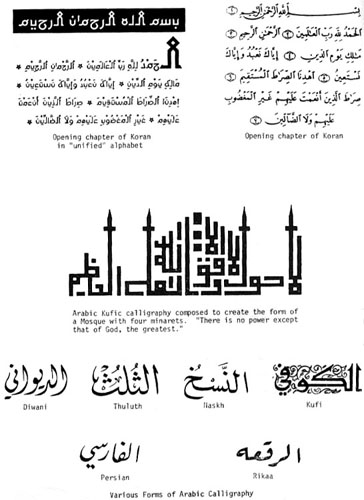|
indefinitely. These leathers were used for book binding, and the gold tooling and colored panels of the Arab style are still being produced, particularly in Venice and Florence, to the present day. From India the Arabs drew the art of crucible steel forging, developed the process, hardened the steel, polished it and decorated it by etching, and produced tempered, flexible Damascene swords. Other works in metal were intricately cut brass chandeliers, ewers, salvers, and jewel cases inlaid in gold and silver, and, of course, the beautifully decorated Astrolabe prized by the sea captains. Language and Caligraphy Because God spoke to Muhamed in Arabic, Arabs venerate their language, and calligraphy became yet another art form. It was the chief form of embellishment on all the mosques of the Arab world, and the religious and public buildings of Palermo, Corboda, Lisbon and Malaga are resplendent with it. The language is rich and pliant, and poetry, literature, and drama have left their mark on both East and West. Among the earliest publications of the Arabs were the translations into their own language of the Greek and Roman classics -- the works of Aristotle, Plato, Hippocrates, Ptolemy, Dioscorides and Galen. They translated, too, the Old Testament, since their own religion was based in great part on it, and later, the New Testament for the inclusion of certain verses in the Koran.
|
